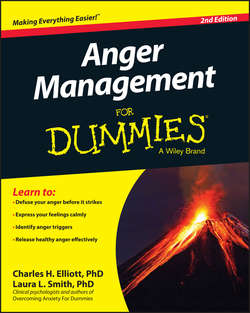Читать книгу Anger Management For Dummies - W. Doyle Gentry - Страница 4
На сайте Литреса книга снята с продажи.
Part I
Getting Started with Anger Management
Chapter 1
Understanding Anger
ОглавлениеIn This Chapter
▶ Identifying anger and where it comes from
▶ Examining the myths about anger
▶ Understanding how emotions work
▶ Finding help when you need it
What do children from Bogota, Columbia, college students in Oxford, England, corporate executives in New York City, mothers from India, and preliterate tribesmen in Borneo and New Guinea have in common? They all recognize an angry face when they see it. Anger, as well as joy, fear, sadness, disgust, contempt, and surprise are universal emotions. All cultures around the globe experience these emotions as an integral part of day-to-day life – and these emotions can lead to both blessings and curses.
Anger forms part of the survival mechanism of human beings. When faced with a threat – not unlike other animals – humans either run away, freeze, or attack. Anger fuels attacks. Angry people experience a surge of energy that helps them repel adversaries.
But anger can also have the opposite effect and lead to an untimely demise. Too much anger can cause heart attacks, precipitate disabling work injuries, ruin relationships, and lead to a variety of unintended negative consequences. Anger truly is a double-edged sword.
